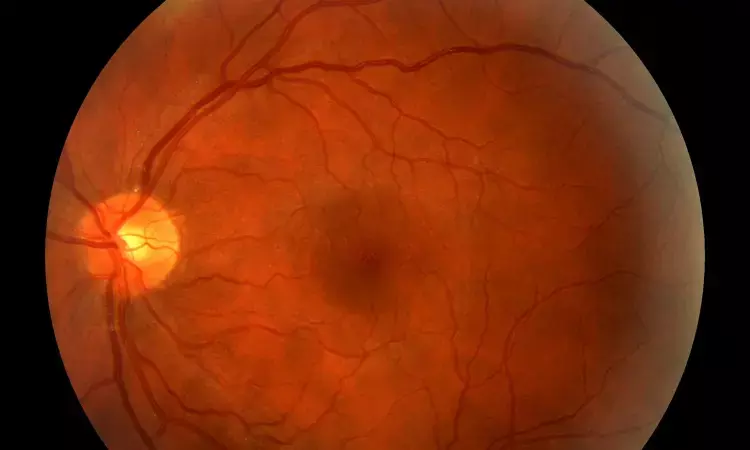- Home
- Medical news & Guidelines
- Anesthesiology
- Cardiology and CTVS
- Critical Care
- Dentistry
- Dermatology
- Diabetes and Endocrinology
- ENT
- Gastroenterology
- Medicine
- Nephrology
- Neurology
- Obstretics-Gynaecology
- Oncology
- Ophthalmology
- Orthopaedics
- Pediatrics-Neonatology
- Psychiatry
- Pulmonology
- Radiology
- Surgery
- Urology
- Laboratory Medicine
- Diet
- Nursing
- Paramedical
- Physiotherapy
- Health news
- Fact Check
- Bone Health Fact Check
- Brain Health Fact Check
- Cancer Related Fact Check
- Child Care Fact Check
- Dental and oral health fact check
- Diabetes and metabolic health fact check
- Diet and Nutrition Fact Check
- Eye and ENT Care Fact Check
- Fitness fact check
- Gut health fact check
- Heart health fact check
- Kidney health fact check
- Medical education fact check
- Men's health fact check
- Respiratory fact check
- Skin and hair care fact check
- Vaccine and Immunization fact check
- Women's health fact check
- AYUSH
- State News
- Andaman and Nicobar Islands
- Andhra Pradesh
- Arunachal Pradesh
- Assam
- Bihar
- Chandigarh
- Chattisgarh
- Dadra and Nagar Haveli
- Daman and Diu
- Delhi
- Goa
- Gujarat
- Haryana
- Himachal Pradesh
- Jammu & Kashmir
- Jharkhand
- Karnataka
- Kerala
- Ladakh
- Lakshadweep
- Madhya Pradesh
- Maharashtra
- Manipur
- Meghalaya
- Mizoram
- Nagaland
- Odisha
- Puducherry
- Punjab
- Rajasthan
- Sikkim
- Tamil Nadu
- Telangana
- Tripura
- Uttar Pradesh
- Uttrakhand
- West Bengal
- Medical Education
- Industry
Study Links High Stress Hyperglycemia Ratio to Diabetic Retinopathy Progression and Post-Surgery Complications

China: A new research published in Diabetology & Metabolic Syndrome has revealed that higher stress hyperglycemia ratio (SHR) levels may significantly increase the risk of diabetic retinopathy (DR) and contribute to adverse surgical outcomes in patients with proliferative diabetic retinopathy (PDR). The study was conducted by Dr. Wenbo Li and colleagues from Tianjin Medical University Eye Hospital, China.
Diabetic retinopathy remains a major cause of vision loss among working-age individuals worldwide. While chronic hyperglycemia is a well-known risk factor, the study sheds light on the role of acute glycemic fluctuations—captured by SHR—as a potential early marker for disease progression and surgical prognosis.
SHR is calculated using a patient's admission blood glucose level relative to their long-term glycemic control, as measured by HbA1c. It serves as an indicator of glycemic stress during acute illness or physiological insult. Although SHR has been associated with poor outcomes in other systemic conditions, its relevance to diabetic eye complications has not been well established.
The research consisted of two components. First, the team utilized data from the National Health and Nutrition Examination Survey (NHANES) spanning 2005 to 2018. A total of 4,539 diabetic individuals were analyzed, including 968 with diagnosed diabetic retinopathy.
The study led to the following findings:
- Multivariable logistic regression showed a significant link between higher stress hyperglycemia ratio (SHR) levels and increased risk of diabetic retinopathy (DR), even after adjusting for other potential risk factors (OR: 1.65).
- A retrospective clinical analysis of 201 patients (250 eyes) with proliferative diabetic retinopathy (PDR) who underwent pars plana vitrectomy (PPV) revealed that individuals with higher preoperative SHR levels were more likely to develop postoperative complications such as recurrent vitreous hemorrhage (RVH) and neovascular glaucoma (NVG).
- Older age and elevated fibrinogen levels were independent predictors of postoperative complications in these patients.
- Paired comparisons indicated that SHR levels at the time of complication onset were significantly higher than those measured during initial PPV surgery, suggesting that an increase in SHR may serve as an early warning sign for adverse postoperative outcomes.
The researchers emphasized that compared to traditional markers like HbA1c, SHR may offer a more dynamic reflection of a patient’s glycemic status during stress or surgery, making it a potentially valuable tool for both early DR screening and postoperative risk assessment.
Despite its promising implications, the study noted several limitations, including its cross-sectional nature, potential recall bias in DR history, and the relatively small sample size in the clinical cohort. Additionally, the predictive power of SHR was moderate, and the authors recommended the use of advanced analytical techniques such as machine learning in future research.
The authors concluded, "The study highlights SHR as a meaningful biomarker associated with both the development and progression of diabetic retinopathy, as well as complications following eye surgery. These findings emphasize the need for careful glycemic monitoring and management, especially around the time of surgical intervention."
Reference:
Nie, Z., Xing, W., Zhang, X. et al. Association between stress hyperglycemia ratio and diabetic retinopathy progression and surgical prognosis: insights from NHANES 2005–2018 and clinical cohort study. Diabetol Metab Syndr 17, 271 (2025). https://doi.org/10.1186/s13098-025-01839-w
Dr Kamal Kant Kohli-MBBS, DTCD- a chest specialist with more than 30 years of practice and a flair for writing clinical articles, Dr Kamal Kant Kohli joined Medical Dialogues as a Chief Editor of Medical News. Besides writing articles, as an editor, he proofreads and verifies all the medical content published on Medical Dialogues including those coming from journals, studies,medical conferences,guidelines etc. Email: drkohli@medicaldialogues.in. Contact no. 011-43720751


